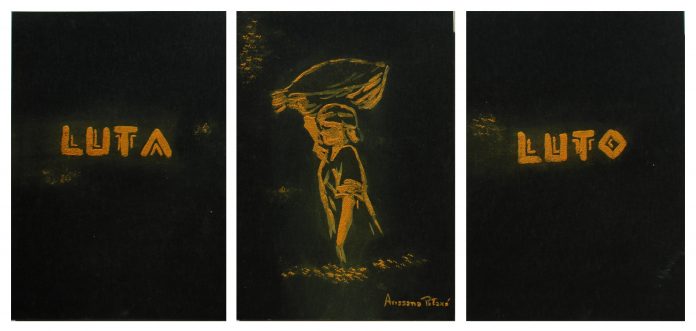This week’s sharing “Memories of the Post-Anthropocene: Rebuilding Worlds with Indigenous Art, Anticoloniality, and Ecological Struggles in Brazil” by renowned indigenous artist Arissana Pataxó of the Pataxó people living in what is now Brazil, shed light, through the medium of art, the intersectionality of Human Rights, Environmental Policy, Social Policy, Language and Cultural Identity for indigenous people.
As a part of the project “Um outro céu” (Another sky), which brings together the study of art, political ecology and anthropology, aiming to bring the struggle of Indigenous Brazilians to light, much of Pataxó’s work is informed by her experiences as an indigenous person.

Her work “Indigente, Indi(o)gente, Indigena-te” roughly translating to (Indigent, Indigenous-person, Indigeneity), which features photos of indigenous people with their bodies removed, leaving only their silhouettes. She presented this work as highlighting the past dehumanization of indigenous people, being taken from their homes and displayed in Europe, and how erasure of indigenous people continues to this day, though through different means.

Furthermore, the impact of the COVID pandemic and the political persecution by Bolsonaro’s government prompted her to create this piece, titled Refúgio (refuge). It features an indigenous person with their belongings, seeking refuge, flanked by the words luta (struggle) and luto (mourning). Arissana presented this work as shedding light on the struggle and pain that indigenous people face while protecting their land. Arissana, together with Felipe Milanez, a lecturer at the Federal University of Bahia and a member of Um outro céu also shared with us the struggle that Indigenous people faced during the pandemic, protecting their land from assault by outsiders encouraged by the Bolsonaro administration, and the toll that COVID had on the limited resources available. They also spoke about the genocide and subsequent greenwashing by the government, who forcibly removed indigenous people from their land in the name of creating a national park, which hammered home how environmental “Protection” does not equal human protection. They also called attention to how with this removal from traditional lifestyle, many practices and knowledge of the natural environment has been lost.
Arissana Pataxó continued by presenting how she has married her art with her community. She presented another work created during the Pandemic, titled “Pau Brasil” (Brazilwood) which was distributed across her community on billboards. It shows a young Brazilwood tree, being held in someone’s hands, with the accompanying lines “Planta Amor, Planta Vida” (To plant love, to plant life). It acts as a community call to action to plant the Brazilwood tree, which was largely wiped out during colonization, to encourage the resurgence of the tree which is highly important to her community.
Outside of being an artist, Arissana also shared her experiences being a teacher in her local Primary and Secondary school, Escola Indígena Pataxó Coroa Vermelha, where she teaches art, and the Pataxó language, Pataxó Hã-Ha-Hãe. She shared how important it was that she was transmitting the culture to the younger generation, through her classes, and she showed a mural, which she painted with her students, that featured traditional symbols.
During the Q&A session, I was quite curious as someone studying Linguistics, how her teaching of Art and Language intersect, where she joked about it being easier to teach both at the same time, but also highlighted how they’re both tools to teach children about themselves and about their identity. In a later conversation she also shared about the progress that her community has made in revitalizing and rescuing her language from the brink of extinction, and how important it is for the community to own their language for themselves.
To me, it was interesting to see, through the eyes of an indigenous person in Brazil, the injustice and struggles that they have to grapple with in a post-colonial world. It was also really engaging to speak with Arissana, who was incredibly welcoming to questions and passionate about her work, and it was great to hear more from her over a casual meal after in the pub.
From Jonas Tan, St Catherine’s College
Oxford, Monday 2 May 2022